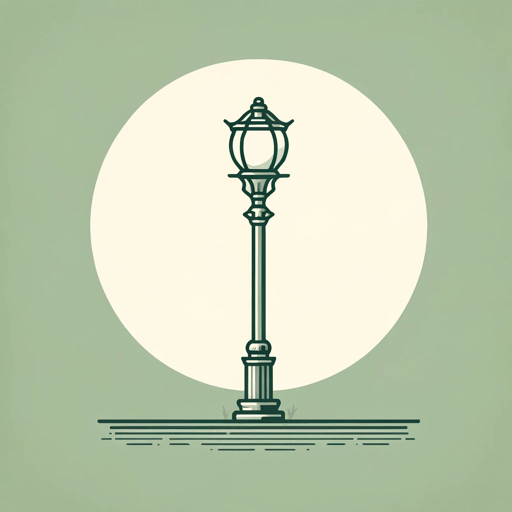78 pages • 2 hours read
Thornton WilderOur Town
Fiction | Play | Adult | Published in 1938A modern alternative to SparkNotes and CliffsNotes, SuperSummary offers high-quality Study Guides with detailed chapter summaries and analysis of major themes, characters, and more. For select classroom titles, we also provide Teaching Guides with discussion and quiz questions to prompt student engagement.
Summary and Study Guide
Overview
Our Town (1938) is a three-act play written by American playwright Thornton Wilder. Wilder served in both World War I and World War II and wrote honestly about life in America. He wrote several plays but considered Our Town to be his best work. It was performed for the first time in Princeton, New Jersey, in 1938. Wilder received the Pulitzer Prize for Drama for Our Town, and the play is widely considered to be the quintessential American play. Countless adaptations have been staged or otherwise performed.
Our Town stands out among other plays because it is metatheatrical. It serves as Wilder’s statement on what he believed to be the disappointing direction that theater had taken. Wilder saw an increasing reliance on props and scenery that he believed obscured the raw themes and characters that theater traditionally offered. Audiences were no longer required to use their imaginations. Our Town is centered on the fictional town of Grover’s Corners, a town like any other, between 1901 and 1913. It brings to light themes of the simplicity of American life, appreciation of life while one has it, the importance of love and family, and the cyclical nature of humanity.
The edition used for this guide is the Harper Perennial Modern Classics Edition paperback reissue from 2003.
Plot Summary
Act I takes place in 1901 and is titled “Daily Life.” The entire play is set in the fictional town of Grover’s Corners, where nothing remarkable seems to happen. All of the play’s characters are presented here as the Stage Manager, who narrates the play, explains their origins, their purpose in the town, and whether or not they have since died. The audience sees the Gibbs and Webb families going about their day, sending their children off to school while the men work and the women tend the house. Each family has two children, they live next door to one another, and the mothers are best friends.
Other town characters, such as the milkman, paperboy, choir ladies, and more, are also introduced. There is a repetitive nature to life in the town and a sense that each day is relatively the same. The town is said to have been inhabited by the same families since the first settlers in the early 1600s, and the Stage Manager describes it as ordinary and unremarkable. Act I provides the exposition, setting, and characters through direct descriptions and scenes acted out by players. The townspeople go about their regular lives, have simple interactions, and conclude their day by appreciating the bright moonlight as it takes them home and into bed for the night.
Act II, titled “Love and Marriage,” sees two teenagers, George Gibbs and Emily Webb, fall in love and marry three years later. The entire act centers on their story of falling in love, their fears and anxieties about marriage, and the societal expectations that push them into it despite these fears. It starts as George wants desperately to see Emily on their wedding day, but when he visits her, he is rebuffed due to superstition and made to sit with her father instead. George asks Mr Webb for marriage advice but is given enigmatic counsel. Instead, he is left to navigate marriage blindly.
The Stage Manager then returns to when George and Emily first realized they were in love. George offers to walk Emily home from school, and the two of them get ice cream sodas together. Emily tells George that she does not appreciate his conceited attitude, and George vows to change while professing his love for her. She admits that she feels the same. The scene cuts back to the wedding day, and everyone is at the church awaiting the ceremony. George and Emily both have moments of panic when they reach the end of the aisle, but their parents quell their concerns, and they are married. Act II ends with one of the town ladies remarking on the importance of happiness in life.
Act III jumps ahead nine years to the year 1913. Several characters have died of various causes common for the period, such as Mrs Gibbs, the Webbs’ son Wally, the church choir leader, and several others. They sit at their graves atop the hill of Grover’s Corners, waiting for whatever may be coming next and slowly growing indifferent toward earthly matters and their previous lives. It is revealed that Emily Webb died giving birth to her second child, and her funeral begins. Emily wanders into the graveyard, confused and with an air of innocence. She realizes immediately where she is but begins thinking about her life and wants to revisit those memories. She begs the Stage Manager to take her back to a special day, despite warnings from the other dead, and he takes her to her twelfth birthday. There, she sees her mother toiling away needlessly instead of spending time with her family and paying attention to what matters. Emily realizes that she wasted her time while alive, just as almost all humans do. She becomes distraught and asks to be returned to the graveyard. George comes up to her tombstone and drops to his knees, sobbing. Emily stares at him indifferently, as if the experience she just had separated her from her life before. The play ends as the Stage Manager remarks that the earth, and everyone on it, works so hard to make something of themselves that they need to rest every night.
Related Titles
By Thornton Wilder
Featured Collections
American Literature
View Collection
Community
View Collection
Community Reads
View Collection
Dramatic Plays
View Collection
Family
View Collection
Mortality & Death
View Collection
Pulitzer Prize Fiction Awardees &...
View Collection
Valentine's Day Reads: The Theme of Love
View Collection



